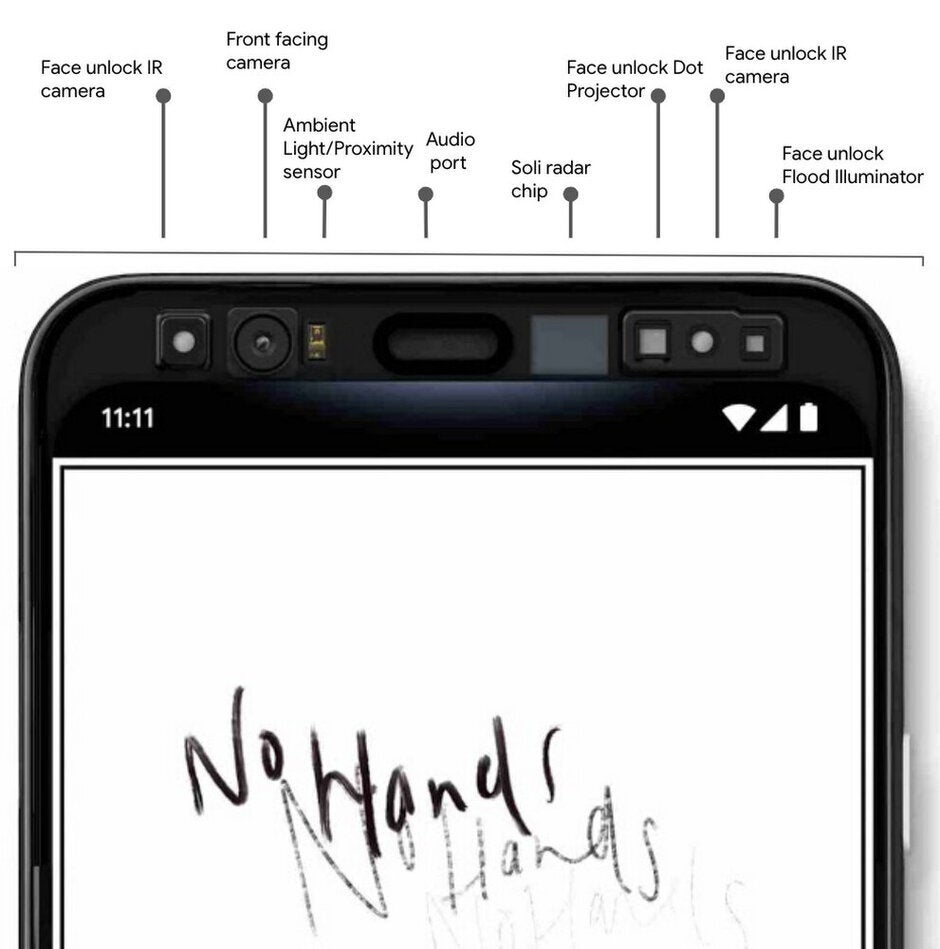With Android 10, Google takes the first step toward challenging Apple with a key feature

If you're an Android user with a Pixel or an Essential Phone, you probably are interested in checking out the new features found on Android 10 including the system-wide Dark theme. But the new build of Android also adds by subtraction; it does away with the Trusted face smart unlock feature most likely in preparation for a real big-league secure facial recognition system on par with Apple's Face ID. After all, the Trusted face smart unlock did not use biometrics for protection and could easily be fooled by a photograph.
Google's new Face unlock might be faster than Apple's Face ID
Whispers about Google's intentions for the upcoming Pixel 4 series started immediately when the first renders were published showing that the rear-facing fingerprint scanner was gone. It was assumed that the new Pixel line would have a secure Face ID type of facial recognition system. This was confirmed in July when Google released a video showing a Pixel 4 user unlocking the device by looking at the phone. The company also stated that the new system "should be able to recognize you, and only you, without any fuss." It also published an image showing all of the sensors that will be found in the phone's top bezel; this includes a pair of infrared Face unlock cameras and a flood illuminator for the system. Google says that its Face unlock will work with the phone held in any orientation and it might be a little faster than the current version of Apple's Face ID; that's because sensors will recognize when the Pixel user is reaching for the phone and will prepare the Face unlock technology to start doing its thing; this will allow the user to pick up the phone and have it unlocked in one motion.

Google has already identified the sensors it will use on the Pixel 4 line for Face unlock
Apple's Face ID uses a method called Structured Lighting to project a pattern of dots in a grid on the subject. Deformities created when the pattern hits the subject can be used to calculate distance and produce a 3D mapping of the face. Besides employing it to unlock the phone, Pixel 4 users will be able to use Face unlock to verify their ID for secure mobile payments and app authentication.
Back in April, the company that supplies Apple with the optical sensor for Face ID said that it expects more business toward the second half of the year when it is looking forward to "a growing share of income from Android smartphone makers." Some of this business could be from Google for the Pixel 4 series.
You might recall that a few weeks after Apple started shipping the iPhone X, the first handset with Face ID, Apple marketing chief Phil Schiller said in an interview that the first attempts from Android manufacturers to copy Face ID would "all stink." But the Pixel 4 series, due to be unveiled and launched next month, could contain the first facial recognition system on an Android phone that improves on Face ID. So it isn't that Google no longer trusts your face; it's that the company has developed a new Face unlock system that you can trust.
Follow us on Google News













Things that are NOT allowed:
To help keep our community safe and free from spam, we apply temporary limits to newly created accounts: